With gleaming metal wings stretching more than 141 feet across the hangar, the colossal Boeing B-29A Superfortress Jack’s Hack commands attention from visitors to the New England Air Museum.

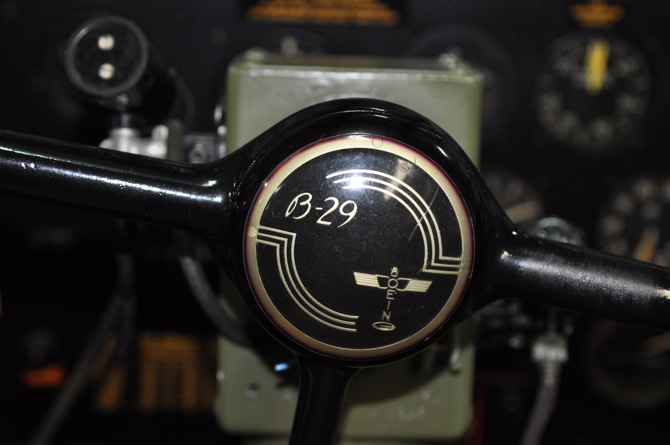


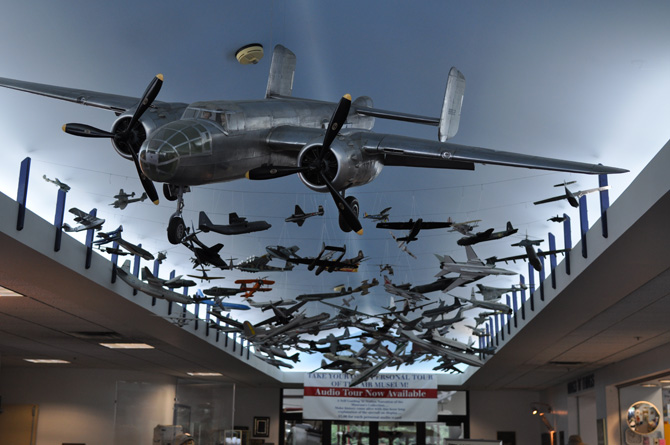
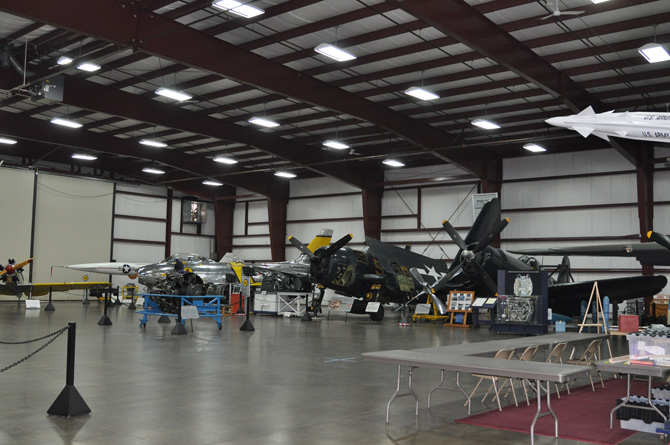



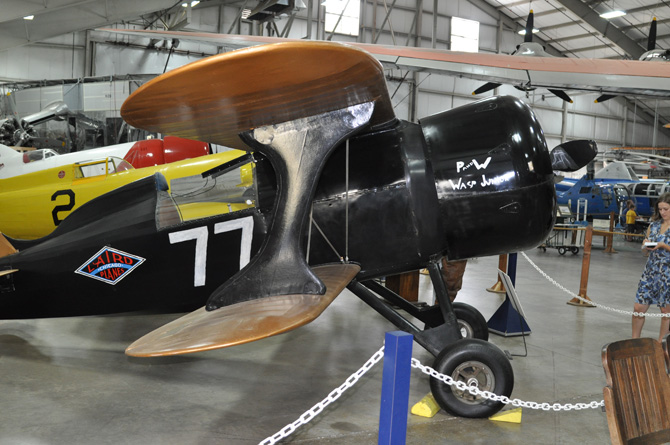


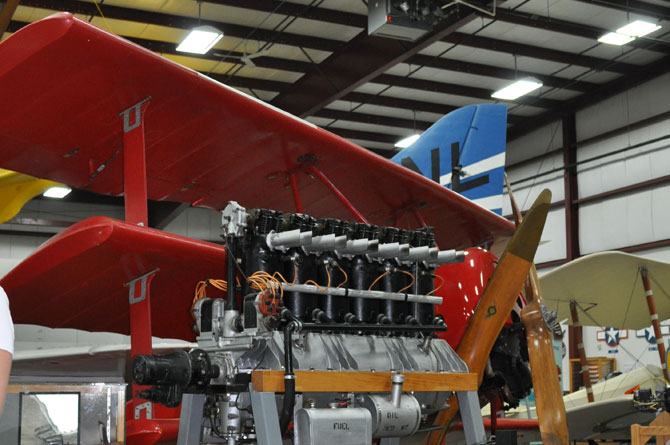

From the ashtrays to the .50-caliber guns, the B-29A is a meticulous reconstruction of its 1945 self. Restoration crew chief Dave Santos said even the ladder in the cockpit was fabricated to original specs—everything is in place as if it’s 1945 and the crew is about to climb on board for a mission. When a World War II veteran sits down in his old seat and instinctively reaches for a switch, “That switch’ll be there,” he said.
Santos has been working on the B-29 project for more than a decade, but the aircraft’s restoration story goes back much further: Volunteers from the museum rescued the aircraft from an Army boneyard in 1973 and in the intervening 40 years have reversed the effects of time, pigeons--and, of course, the tornado.
A tornado that ripped through the Windsor Locks, Conn., museum’s outdoor exhibit in 1979 tossed tons of metal like toys and tore the roof off of the organization’s leased hangar. Twenty-three aircraft on display were severely damaged; 13 had to be scrapped, a museum history recounts. Today the Superfortress, whose No. 4 engine and left wing spar were damaged in the tornado, gleams like new in its hangar. And it’s not the only tornado survivor to rise from the ashes; volunteers come out to the museum on a secluded corner of Bradley International Airport on Tuesdays, Thursdays, and Saturday mornings to fight time and nature’s fury to bring the museum’s aviation relics back to life.
Hard luck
On Oct. 3, 1979, a tornado tore through Windsor Locks, seeming to take aim directly at the outdoor display area of the museum, then known as the Bradley Air Museum. It overturned aircraft and ripped the roof from a World-War-II-era hangar that housed some of the more fragile aircraft. Total damage was estimated at $10 million, a New York Times article noted about the museum’s reopening a full two years after the tornado.
“Among the demolished aircraft were a Lockheed Constellation airliner once owned by Howard Hughes, a 55-ton Douglas C-133, the largest plane in the museum’s collection, and a rare Douglas F4D Skyray, a Navy fighter plane that rolled over and over in the fury of the storm until all that remained was a ball of blue fuselage,” the article explained.
Even the Superfortress was no match for nature. A New York Times article after the tornado described the aircraft wedged between one of its engines and the fuselage of another airplane.
Air museum to host Summit closing party
Attendees at AOPA Aviation Summit in Hartford, Conn., can enjoy dinner and entertainment as they experience the area’s aviation history at the New England Air Museum during the show’s closing party from 5 to 8 p.m. Saturday, Sept. 24.
Connecticut-based 10-piece swing orchestra Simply Swing will evoke the big band and swing dance eras; and national recording artist and AOPA’s own Zane Lewis will deliver a special aviation-themed musical performance. Tickets are $70 per person and include dinner, admission to the museum and exhibits, live entertainment, and a $20 donation to the GA Serves America campaign.
AOPA will provide complimentary transportation to and from the event from certain downtown hotels. See the website for more information.
And the tornado was not the organization’s first brush with weather’s wrath. The museum began in 1959 as the Connecticut Aeronautical Historical Association, a group dedicated to preserving aviation history. The association soon found itself with a collection of aircraft, but no building to house them in. An inflatable structure like an air-supported sports dome was installed in 1967 but collapsed shortly thereafter from the weight of heavy snow. And when restorers were finally able to get a roof over some of their aircraft’s head, the tornado peeled it off.
With military and civilian hangars, a children’s area, the B-29 memorial hangar, and more, the museum today offers protection to a collection that has grown and flourished since the tornado. A Sikorsky VS-44 Flying Boat dominates the spacious civilian hangar, encircled by such gems as Gee Bee racers, a Lockheed Electra, a DC-3, and a balloon basket from about 1870. Aircraft in the military hangar range from a Chance-Vought XF4U-4 Corsair to a Grumman F-14 Tomcat. And the B-29 gleams in its hangar, a tribute to the 58th Bombardment Wing. Some aircraft still sit outside, awaiting the attention of volunteer restorers who are the lifeblood of the organization.
Labor of love
Igor Sikorsky flew his first helicopter in Stratford, Conn. The Granville brothers built their super-fast Gee Bee racers in nearby Springfield, Mass. Companies such as United Technologies, Kaman Aerospace, and GE are headquartered in Connecticut. The area’s rich aviation history and still thriving industry show in the collections at the New England Air Museum, but the organization benefits in another way, too—a supply of skilled aviation enthusiasts willing to volunteer to help preserve and restore their heritage.
Many of the museum’s dozens of volunteer restorers are employees or alumni of Pratt & Whitney, Hamilton Standard, or other companies that have called Connecticut home, said development and marketing chief Susan R. Orred; some volunteer docents have ties to the aircraft on display.
On a hot Thursday morning this summer, Santos was focused on some of the detail work that represents what he estimates to be the last 5 percent of the B-29 restoration. The wiring was cut when the military turned over the aircraft, standard practice to prevent museums from reselling display aircraft for use; but the Superfortress looks almost ready to taxi away. The propellers even get turned every three or four months, Santos said.
“Now we get fussy,” he said. “I want it exactly the way it looked in 1945.”
The Air Force veteran, who said he worked on B-29s during the Korean War, got involved in the restoration once the project had enough funding to go indoors and start in earnest. Before that, volunteers had tended to the aircraft outside.
The B-29 arrived at the museum in 1973 after volunteer crews hauled it back, piece by piece, from the Army’s Aberdeen Proving Ground in Maryland. A news report after the tornado said the crews had made nine weekend trips, “sometimes driving, sometimes hitching rides on Connecticut Air National Guard training flights” to recover the bomber.
“The museum had to go in there on their own and take it out of the swamps,” Santos said. He said it came to restorers with nothing inside except wires and insulation.
After the tornado the aircraft remained outside, subject to the seasons and nesting habits of Connecticut fauna, for close to 20 years. In the 1990s, retired Air Force Lt. Col Donald Lundberg, a World War II veteran and member of the 58th Bombardment Wing, learned of the museum’s B-29 and launched an effort to support the restoration—and housing—of the airplane.
A state grant and money raised from members of the 58th Bombardment Wing brought the restoration indoors and made the display hangar possible. The hangar now serves as a memorial to the first unit to take the B-29 into combat in World War II, according to the New England Air Museum website
“You can see it was a labor of love,” Santos said.
Since the B-29 moved from the restoration hangar to its place of honor on display, another project has taken its place. A 1944 Douglas A-26C Invader—which flew out of France and was later abandoned in Bridgeport in 1969—sits in the hangar with the tail off and windscreen missing, amidst shelves of boxes and signs that proclaim “Pratt & Whitney,” “Cessna,” and “Go Air Force.”
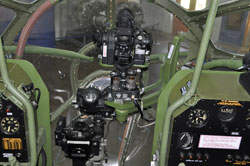 It’s taken about three years to clean the metal skin, said restoration coordinator/crew chief Carl Sgamboti. Sgamboti started on the project in 1998 but was only able to work on it for a month before the B-29 project took precedence, he said. He was able to return to it in 2003, he said, and the team has made progress as time and money allow. (In the specialized world of aircraft restoration, it’s not enough to pay for a part to be manufactured; one also must pay to transport it—even if it’s across the country. For a nonprofit, that can take time.)
It’s taken about three years to clean the metal skin, said restoration coordinator/crew chief Carl Sgamboti. Sgamboti started on the project in 1998 but was only able to work on it for a month before the B-29 project took precedence, he said. He was able to return to it in 2003, he said, and the team has made progress as time and money allow. (In the specialized world of aircraft restoration, it’s not enough to pay for a part to be manufactured; one also must pay to transport it—even if it’s across the country. For a nonprofit, that can take time.)
The restoration serves as a memorial to the people who flew it and to the aircraft itself. “It gets lost in history,” Sgamboti said, “but it was actually a very good aircraft.”
While most major restorations take place behind the scenes in the restoration hangar, a K-class Navy airship has been taking shape amidst the exhibits in the civilian hangar. Volunteer Russ Magnuson, standing by a sign that read “No Parking / Blimp Parking Only / All others will be towed,” said that nothing was inside the airship when it arrived at the museum; the interior had to be re-engineered from photographs. This type of blimp was used for spotting enemy U-Boats during World War II, and as another sign proclaimed, “No vessel escorted by a blimp during World War II was ever sunk by an enemy submarine.”
Magnuson said he and the other volunteers like to talk when visitors stop by. And after more than 18 years at work, “This is our second home,” he said. What will he do when the restoration is complete? “I hate to think about it,” he said.


